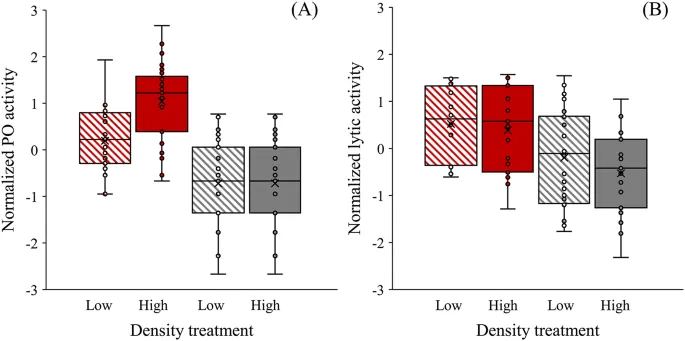
The Intriguing Link Between Population Density and Immunity in Bean Beetles
2025-09-01
Author: Daniel
Unraveling Life's Trade-Offs
In the fascinating world of bean beetles, scientific exploration reveals the complexities of life history theory, particularly how trade-offs shape survival strategies. These adaptive mechanisms, driven by environmental factors, dictate resource allocation for immunity, reproduction, and other vital traits.
Immunity: A Costly Yet Crucial Trait
Immunity stands out as a key element affecting the bean beetles’ lifespan and fitness. However, developing and maintaining a robust immune system comes at a high energetic cost, which may lead to trade-offs with other important life history traits such as reproduction.
The Dance of Density and Disease
One intriguing hypothesis in the study of beetle behavior is the 'density-dependent prophylaxis hypothesis.' This suggests that in crowded environments, where diseases spread rapidly, beetles are likely to enhance their immune responses. Males and females may differ significantly in their immune strategies due to distinct reproductive pressures: males often prioritize traits that enhance competitiveness, while females focus on longevity and egg production.
A Deep Dive into Bean Beetle Research
This research intricately examines how sex and social environment influence trade-offs between immunity, reproduction, and dispersal traits in the bean beetle, *Callosobruchus maculatus.* By measuring their immune responses, researchers aimed to reveal sex-specific strategies that could provide insights into evolutionary adaptations.
Experimental Insights: Findings from the Lab
Scientists found that female beetles raised in high larval density conditions exhibited stronger immune responses than their low-density counterparts. Interestingly, these high-density females also had smaller reproductive organs, indicating a trade-off between robust immunity and reproductive investment.
Covariance and Trade-Offs Explained
The study highlighted a negative correlation between gonad size and immune performance in females, reinforcing the idea that increased competition for resources in high-density environments can lead to significant trade-offs between immunity strength and reproductive capability.
The Bigger Picture: Implications of the Findings
The results align well with the density-dependent prophylaxis hypothesis, emphasizing how environmental conditions shape immune strategies. Insights from such research could shed light on broader ecological and evolutionary dynamics, particularly as populations face varying environmental pressures.
Conclusion: A Remarkable Balancing Act
As these tiny beetles navigate the complexities of survival, their adaptive strategies of immunity and reproduction reveal a delicate balance shaped by their environment. This exploration not only enhances our understanding of *Callosobruchus maculatus* but also contributes valuable knowledge to the fields of ecology and evolutionary biology.

 Brasil (PT)
Brasil (PT)
 Canada (EN)
Canada (EN)
 Chile (ES)
Chile (ES)
 Česko (CS)
Česko (CS)
 대한민국 (KO)
대한민국 (KO)
 España (ES)
España (ES)
 France (FR)
France (FR)
 Hong Kong (EN)
Hong Kong (EN)
 Italia (IT)
Italia (IT)
 日本 (JA)
日本 (JA)
 Magyarország (HU)
Magyarország (HU)
 Norge (NO)
Norge (NO)
 Polska (PL)
Polska (PL)
 Schweiz (DE)
Schweiz (DE)
 Singapore (EN)
Singapore (EN)
 Sverige (SV)
Sverige (SV)
 Suomi (FI)
Suomi (FI)
 Türkiye (TR)
Türkiye (TR)
 الإمارات العربية المتحدة (AR)
الإمارات العربية المتحدة (AR)